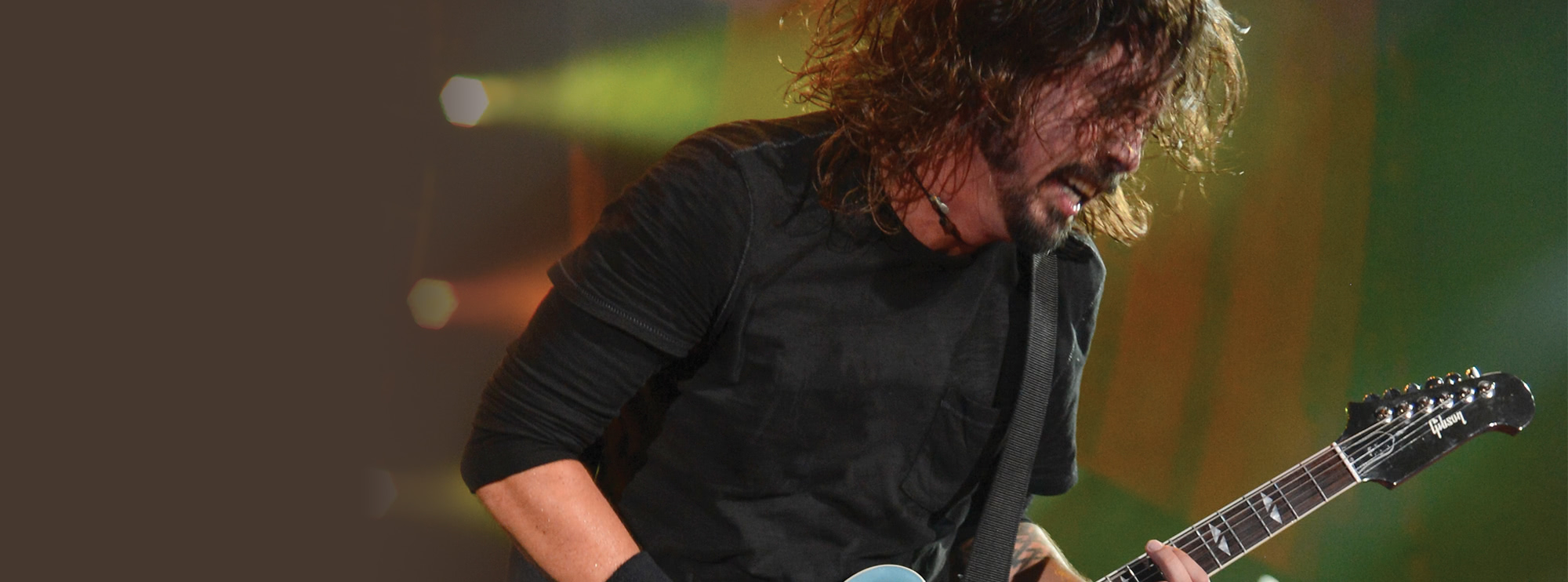Houses Of The Holy: An in depth analysis for guitarists
Houses of the Holy is the fifth studio album by the legendary British rock band, Led Zeppelin. Released in 1973, it showcased the band's ability to explore and incorporate a variety of musical styles, from reggae to funk. For guitarists, this album is a treasure trove of inspiration, featuring the virtuoso guitar work of the iconic Jimmy Page.
In this course, LickLibrary veteran, Danny Gill walks you through the many highlights of each song from this classic rock gem, one phrase at a time, including all of Jimmy Page’s legendary guitar parts from the tracks; “Over The Hills And Far Away,” “The Rain Song,” and the epic, “No Quarter.”
1. The Song Remains the Same
The album kicks off with "The Song Remains the Same," an energetic and fast-paced track with a unique guitar sound. Page employs the use of open Dsus4 tuning (D-A-D-G-A-D) to create a drone effect, which adds a distinct depth to the chords. The song contains a mix of major and minor pentatonic scales, with the main riff being in the key of G major. Page's soloing during the instrumental sections showcases his masterful command of legato, bends, and slides.
2. The Rain Song
"The Rain Song" is a beautiful, melancholic ballad that highlights Page's ability to craft intricate, emotive chord progressions. The tuning for this song is unique as well: DGCGCD, which allows for interesting open-string voicings. Page primarily uses the G major scale, but with the occasional use of the G Mixolydian mode, which adds a sense of tension and resolution. The solo section features a melodic, slow-paced exploration of the G major scale, incorporating techniques such as string bends and slides to create a soulful, emotional atmosphere.
3. Over the Hills and Far Away
"Over the Hills and Far Away" begins with an acoustic guitar intro in G major, played with a fingerpicking pattern that highlights Page's fingerstyle technique. The electric guitar then takes over, with the main riff making use of the G Mixolydian mode. The solo section showcases Page's command of the G major pentatonic scale, with tasteful use of bends, hammer-ons, pull-offs, and slides. This song is a great example of how Page effortlessly transitions between acoustic and electric guitar, showcasing his versatility as a guitarist.
4. The Crunge
"The Crunge" is a funky, groove-oriented track that demonstrates the band's ability to incorporate different styles into their music. Page's use of a wah-wah pedal creates a distinct, rhythmic guitar sound that drives the song. He employs the E Dorian mode and the E minor pentatonic scale for the main riff, while the solo section features a mix of E Dorian and E Mixolydian. Techniques such as palm muting and syncopation are prominent in this track, adding to the overall funky feel.
5. Dancing Days
"Dancing Days" features a mesmerizing, hypnotic riff that showcases Page's ability to create simple yet memorable guitar parts. The tuning for this song is open G (D-G-D-G-B-D), which allows for interesting chord voicings and slide work. Page mainly utilizes the G major pentatonic scale and the G Mixolydian mode throughout the song. The solo section demonstrates his skillful use of string bends, hammer-ons, and pull-offs, creating a fluid, melodic solo that complements the song's vibe.
6. D'yer Mak'er
"D'yer Mak'er" is a unique track in Led Zeppelin's catalog, as it incorporates a reggae-inspired rhythm with a rock and roll sensibility. The guitar riff is based on the C major pentatonic scale, and Page adds a touch of his signature style with bends and slides. The solo section, although brief, showcases Page's ability to blend the C major pentatonic scale with the C Mixolydian mode, creating a catchy, melodic solo that complements the reggae feel of the song. Techniques such as palm muting, staccato picking, and syncopation are used to enhance the overall groove.
7. No Quarter
"No Quarter" is a moody, atmospheric track with a hauntingly beautiful guitar riff. The song is played in standard tuning and mainly utilizes the C# minor pentatonic scale, with the occasional use of the C# Aeolian mode. Page's use of fingerpicking, volume swells, and subtle echo effects creates an ethereal, spacious sound. The solo section showcases his command of the C# minor pentatonic scale, incorporating bends, slides, and vibrato to create a captivating, expressive solo that complements the dark mood of the song.
8. The Ocean
The album closes with "The Ocean," a powerful, upbeat track with a driving riff based on the A Mixolydian mode. The song is played in standard tuning, and Page uses techniques such as palm muting, alternate picking, and syncopation to create a tight, energetic groove. The solo section is a masterclass in the A major pentatonic scale, featuring fast-paced licks, bends, and slides that demonstrate Page's exceptional skills as a lead guitarist.
Jimmy Page: The Lead Guitarist's Contribution
Throughout "Houses of the Holy," Jimmy Page's guitar work is nothing short of phenomenal. As the lead guitarist and primary songwriter for Led Zeppelin, Page's contributions to the album are immeasurable. His ability to seamlessly blend various musical styles, from reggae to funk, showcases his versatility as a guitarist and composer.
Page's exceptional skills as a lead guitarist are on full display in this album, with each solo demonstrating his mastery of various guitar techniques and scales. From the soulful, melodic solos of "The Rain Song" and "Over the Hills and Far Away" to the fast-paced, energetic licks of "The Ocean," Page's solos are memorable and inspiring.
Additionally, Page's innovative use of alternate tunings and fingerpicking techniques adds a unique depth and richness to the album's sound. His ability to craft memorable riffs and chord progressions, such as those found in "Dancing Days" and "No Quarter," is a testament to his musical genius.
Overall, "Houses of the Holy" is a must-listen for any guitarist looking to study and appreciate the innovative and virtuosic guitar work of Jimmy Page. The album's diverse range of musical styles and techniques offers a wealth of inspiration and serves as a testament to Led Zeppelin's enduring legacy in the world of rock music. As a guitarist, studying this album can help you not only improve your technical skills but also expand your understanding of how different musical styles and techniques can be blended to create a unique and memorable sound.
Guitar Techniques Used in Houses of the Holy
Throughout the album, Page employs a variety of guitar techniques that contribute to the unique sound and feel of each song. Some of the techniques used include:
- Alternate Picking
- String Bends
- Slides
- Hammer-ons
- Pull-offs
- Palm Muting
- Syncopation
- Fingerpicking
- Volume Swells
- Vibrato
- Legato

About The Tutor
Tutor Profile
Danny Gill
Danny Gill is, without a doubt, the most loved tutor by our community. With an incredible array of DVDs and web lessons for LickLibrary covering a wide variety of topics all of which he covers with incredible detail, it's no wonder he carries as much respect as he does. As...




